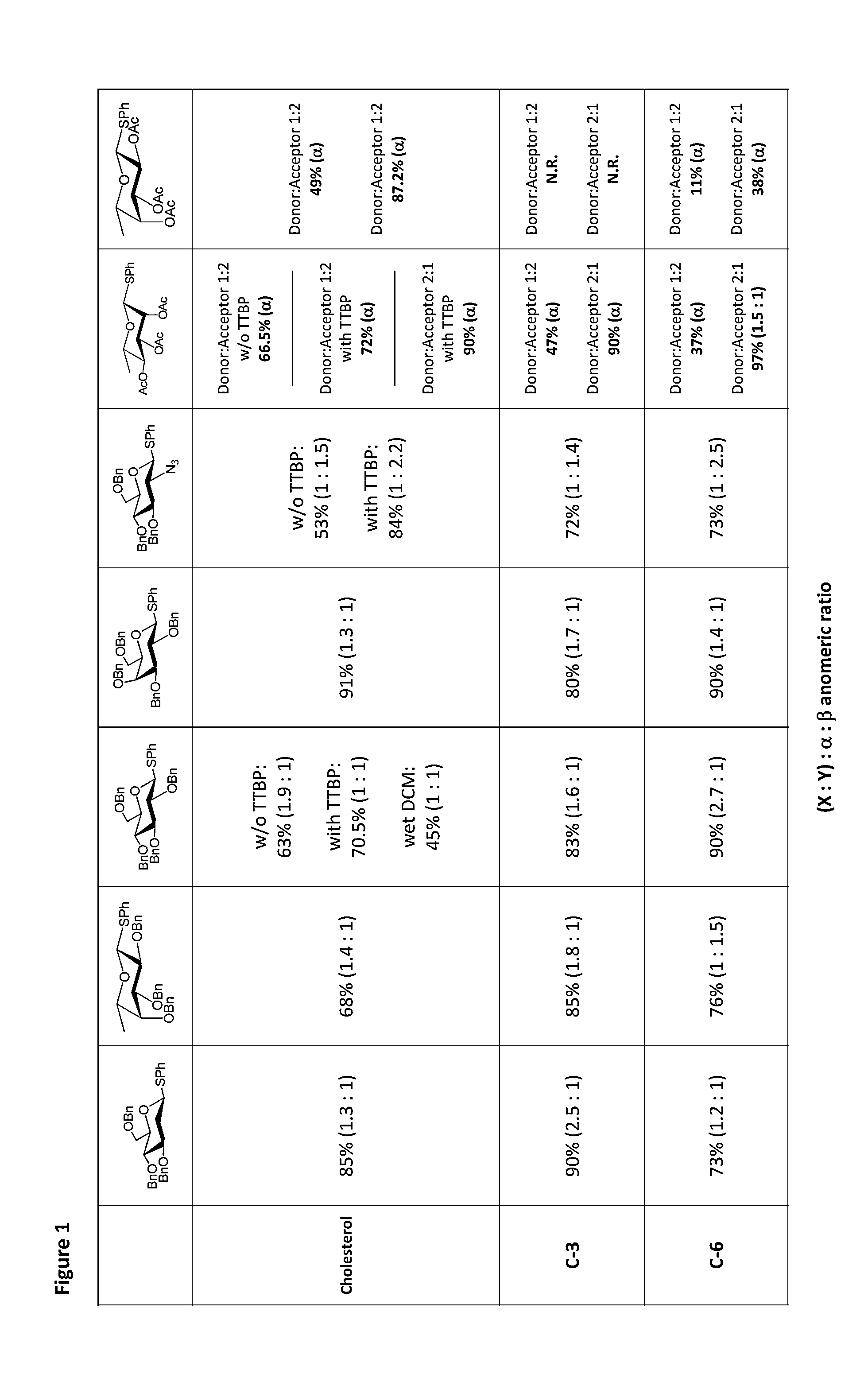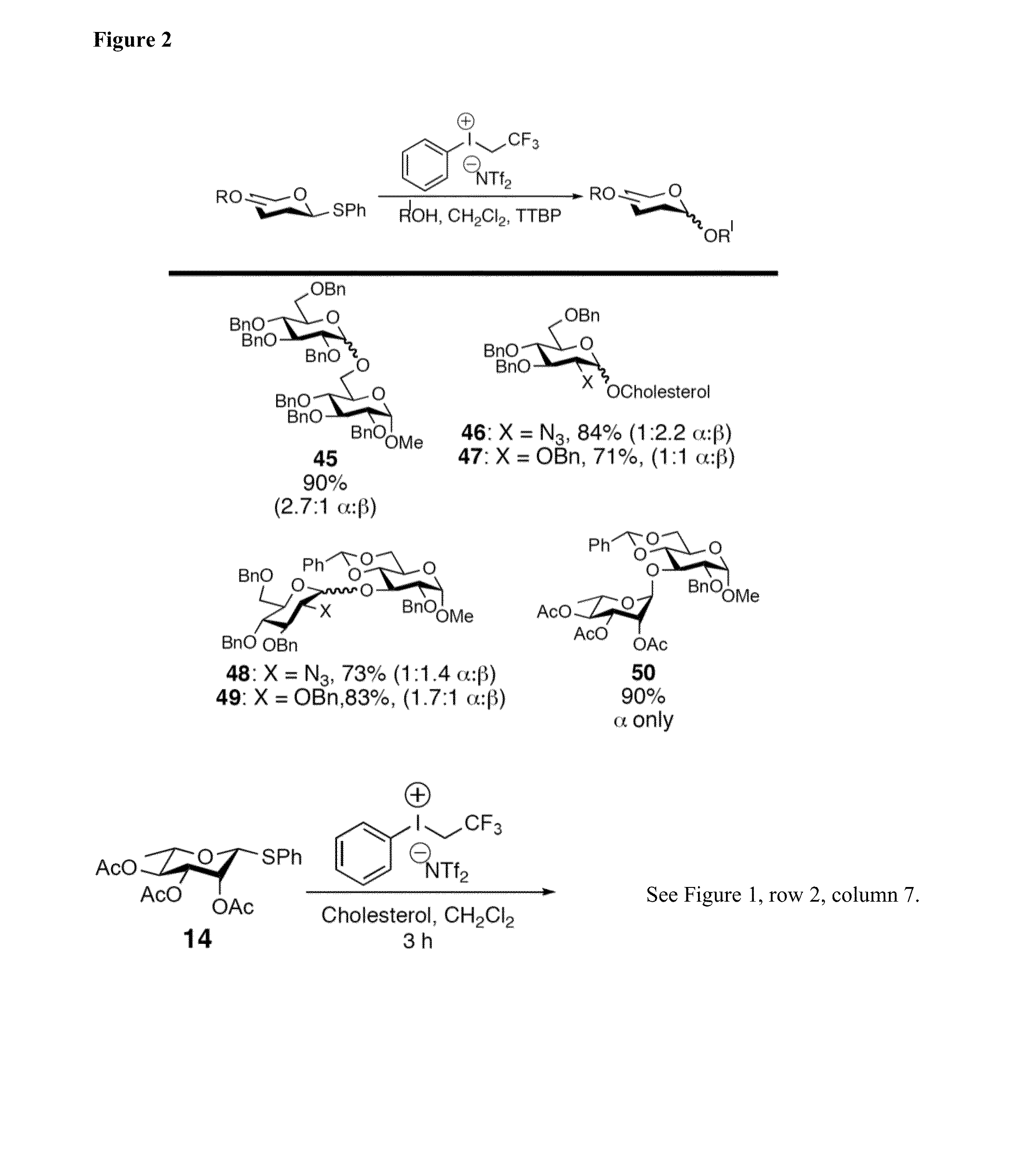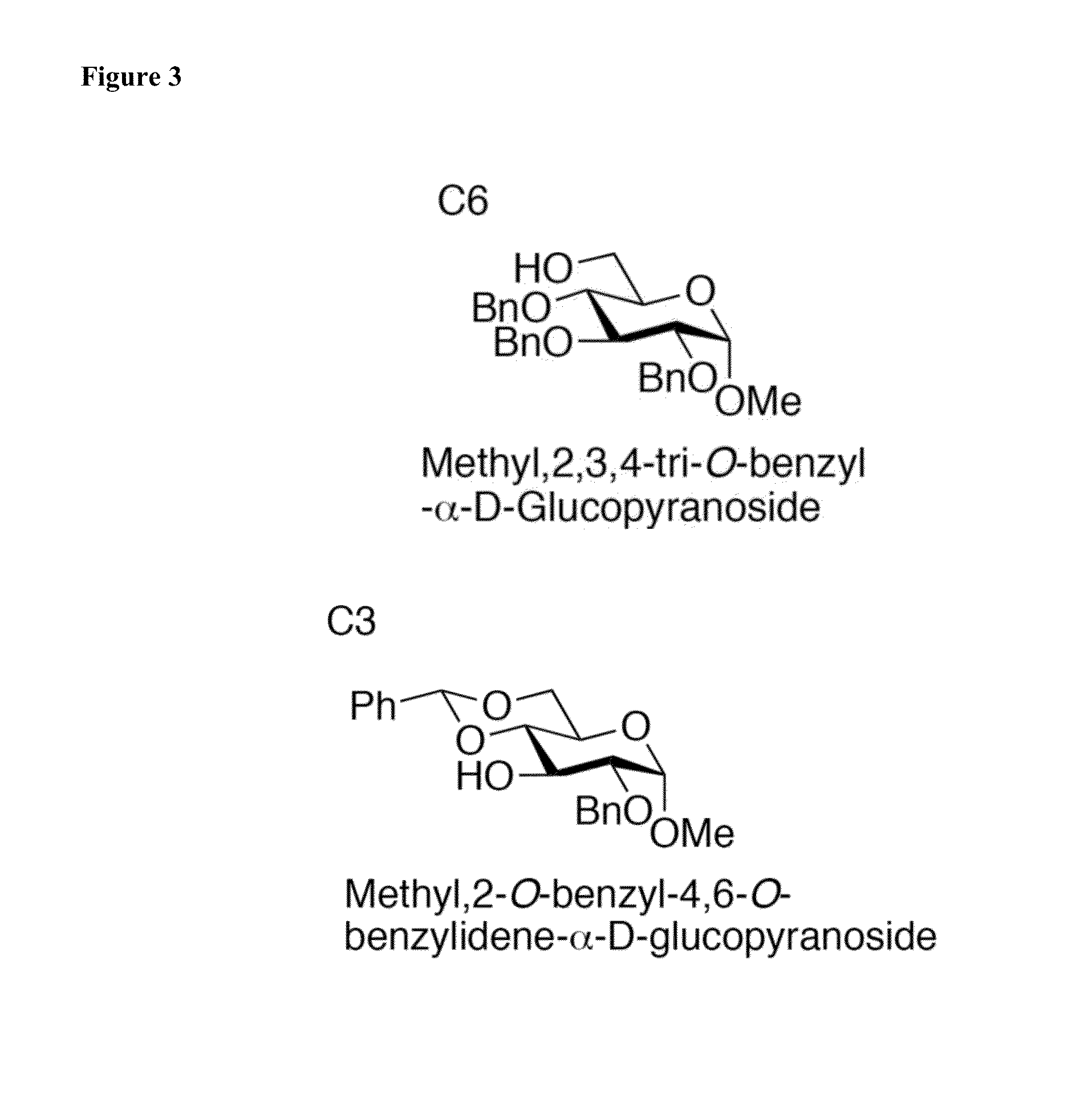Glycosylation Reactions Using Phenyl(trifluoroethyl)iodonium Salts
a technology of phenyl (trifluoroethyl) iodonium salt and glycosylation reaction, which is applied in the direction of oligosaccharides, drug compositions, sugar derivates, etc., can solve the problems of limited substrate scope, yield, selectivity,
- Summary
- Abstract
- Description
- Claims
- Application Information
AI Technical Summary
Benefits of technology
Problems solved by technology
Method used
Image
Examples
example 1
General Experimental Details
Procedure for Glycosylation Reactions
[0123]General Experimental Details.
[0124]All reactions were performed under inert argon atmosphere. Flash column chromatography was performed on SiliCycle P-60 silica gel, 230-400 mesh. Analytical and preparative thin layer chromatography was carried out on EMD silica gel 60 F-254 plates. Products were visualized using UV or by staining with 5% aqueous sulfuric acid or ceric ammonium molybdate. NMR spectra were recorded on a Bruker Avance III NMR spectrometer at 500 MHz for 1H NMR and 125 MHz for 13C NMR. NMR data are reported as follows: δ shift, multiplicity [s=singlet, m=multiplet, t=triplet, d=doublet, dd=doublet of doublets, ddd=doublet of doublet of doublets, dddd=doublet of doublet of doublet of doublets, dt=doublet of triplets, td=triplet of doublets, q=quartet], coupling constants are reported in Hz. Low resolution mass spectra (LRMS) were recorded using a Finnigan LTQ ESI-MS with an additional APCI source. Hi...
example 2
Results of Glycosylations with Armed and Unarmed Donors
[0129]Thioglycosides have become popular glycosyl donors due to their ease of preparation and stability towards a wide range of conditions. Modulating the reactivity of either the glycosyl donor or the thiol aglycone permits the use of thioglycosides in one-pot and iterative oligosaccharide synthesis. Importantly, the use of pre-activation protocols also allows the use of thioglycosides with similar reactivity in one-pot synthesis. In addition, a number of thiophilic promoter systems have been demonstrated to activate thioglycoside donors for a subsequent glycosylation.
[0130]Nevertheless, several issues prevent the chemical biology community from broadly adopting this chemistry. In particular, many thiophilic promoter systems require the use of toxic reagents, extremely low reaction temperatures (−78° C., or lower), and / or unstable reagents that must be purified before each glycosylation reaction. Collectively, these factors pre...
example 3
Effect of Nitrite Structure on Selectivity of Glycosylation Reaction
[0138]It is well established that nitrile solvents can increase β-selectivity in glycosylation reactions. To our knowledge, there has been no report of a systematic survey of the effects of nitrile structure on selectivity. Schmidt, R. R. et al., Synlett 1990, 694-696. To this end, glycosylations promoted by the iodonium salts 101 and 102 were carried out in a number of different solvents. These studies showed that more electron-rich nitriles tended to provide higher levels of selectivity, while using electron-deficient nitriles led to decreased selectivity (FIG. 9).
[0139]Furthermore, lowering the initial reaction temperature resulted in increased selectivity (FIG. 10).
PUM
 Login to View More
Login to View More Abstract
Description
Claims
Application Information
 Login to View More
Login to View More - R&D
- Intellectual Property
- Life Sciences
- Materials
- Tech Scout
- Unparalleled Data Quality
- Higher Quality Content
- 60% Fewer Hallucinations
Browse by: Latest US Patents, China's latest patents, Technical Efficacy Thesaurus, Application Domain, Technology Topic, Popular Technical Reports.
© 2025 PatSnap. All rights reserved.Legal|Privacy policy|Modern Slavery Act Transparency Statement|Sitemap|About US| Contact US: help@patsnap.com



